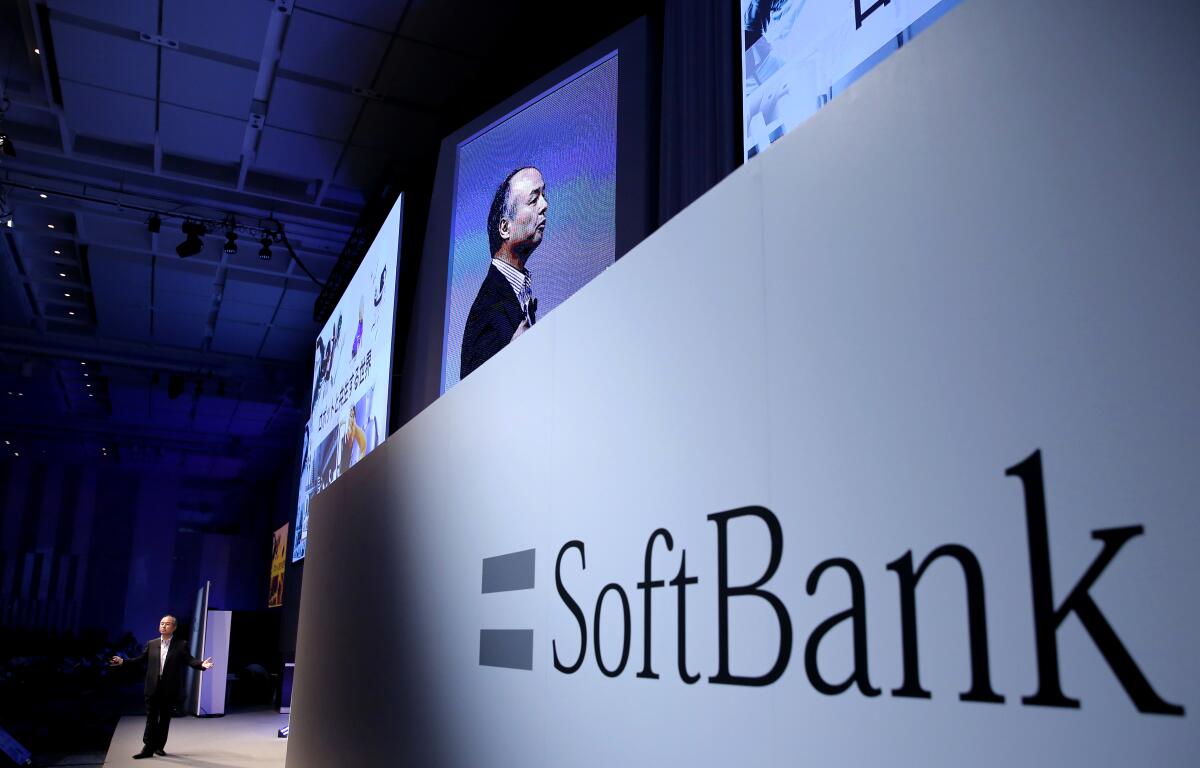Some doubt whether Softbank is the ‘whale’ behind the tech stock surge

- Share via
A report that SoftBank Group Corp. is making billions by using options to bet on technology stocks has stirred speculation the Japanese conglomerate could have been a driving force behind a recent rally — but not everyone is convinced.
Evidence suggests the kind of strategies pursued by institutions such as SoftBank have a minimal effect on stock market volatility, said Benn Eifert, chief investment officer of hedge fund QVR Advisors. Citing commentary from derivatives trading desks, he said the real power is being wielded by day traders buying enormous amounts of call options on tech stocks.
Eifert’s analysis speaks to a debate that’s been raging in the stock market about who is behind a surge in options trading and what it all means for investors. Over the weekend, the Financial Times reported that SoftBank spent $4 billion over the last few months buying equity derivatives on technology stocks.
Several analysts have pointed out that the heft of large institutional players remains relatively small compared with the rest of the market. Retail punters shelled out $40 billion in call premiums in a month, data from the Options Clearing Corp. compiled by Sundial Capital’s Jason Goepfert show.
Evidence of retail sway comes from parsing the types of trades, Eifert said. Individual investors have been piling into call options that usually expire within two weeks. The short-term nature of the contracts requires hedging by market makers, which in turn fanned higher stock prices.
In contrast, trades favored by large institutions don’t necessarily require market makers to buy and sell the underlying stock to hedge themselves, Eifert said. He said institutions tend to use strategies such as buying a call spread and selling the underlying shares — a technique to profit from a rally, but also limit risk.
“These transactions themselves did not represent meaningful buying pressure,” Eifert wrote on Twitter.
The call spread trades did contribute to the curious phenomenon of the Standard & Poor’s 500 index rising at the same time as the VIX index, he said.
To be sure, it’s impossible to tell exactly who is behind a trade just by looking at the order flow. Parts of these big institutional trades were probably done over-the-counter, which makes it harder to gauge their full market effect, said Kambiz Kazemi, principal at La Financiere Constance Inc.
Options activity by both big and small traders has probably heightened market volatility, said RBC Capital Markets strategist Amy Wu Silverman.
“The sheer scale of call buyers both institutional and retail cause a ‘gamma’ squeeze situation for dealers, exacerbating moves in tech,” she wrote in a report Monday. (“Gamma” is a term for option price drift that dealers often seek to offset by buying or selling the underlying stock.)
Call options volumes started surging in March, April and May as retail investors opened up Robinhood accounts and started a frenzy of day trading, Silverman said, adding that the jump was “for smaller and smaller contract sizes,” a typical footprint of retail.
Big institutional trades in tech started arriving in August, Silverman said. She cited call spreads in a handful of technology companies as having the hallmarks of a big institutional bet.
The trades were placed Aug. 5 in Microsoft Corp., Facebook Inc., Adobe Inc., Salesforce.com Inc. and Alphabet Inc. options. By then, the Nasdaq 100 had rallied some 60% from the March lows, suggesting institutions were merely following others into the trade.
Bloomberg writer Cormac Mullen contributed to this report.
More to Read
Inside the business of entertainment
The Wide Shot brings you news, analysis and insights on everything from streaming wars to production — and what it all means for the future.
You may occasionally receive promotional content from the Los Angeles Times.










